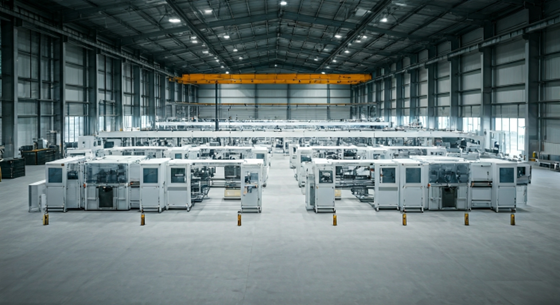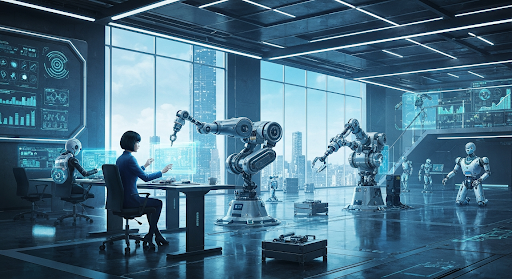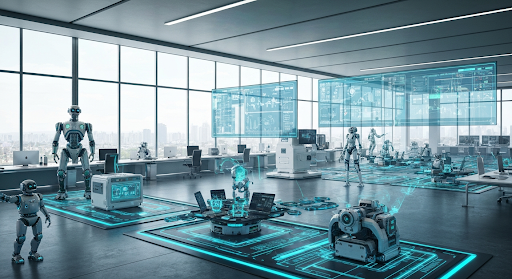A Beginner’s Guide to Automatic Manufacturing Explained
Key Highlights
- Gain an understanding of how automatic manufacturing optimizes production processes through advanced industrial automation technologies.
- Differentiate between manual labor and automated systems to appreciate the efficiency and accuracy of modern production lines.
- Explore essential technologies such as robotics, IoT, and machine tools that power today’s automated manufacturing processes.
- Learn how various industries, including the automotive and food processing sectors, are adopting automation for better productivity.
- Get step-by-step guidance for beginners tackling implementation challenges and choosing the right automation solutions.
- Find answers to pressing questions about cost efficiency, job impacts, and the timeframes for successfully automating processes.
Introduction
Automatic manufacturing has changed the way the manufacturing process works. The use of industrial automation makes everything more productive, accurate, and efficient. With control systems using artificial intelligence, robotics, and IoT, there is less need for manual labor. Because of this, factory floors are now places focused on continuous improvement. These automation solutions help businesses by cutting down on human error and by raising production rates. Many people in different fields use these new tools to stay ahead. This shift is bringing new opportunities for people and for economic growth. It also helps with labor shortages and meets global demand. Let’s look at the basics that drive these changes in how we work.
Beginner's Guide to Automatic Manufacturing: Key Concepts
Understanding Automatic Manufacturing: The Basics
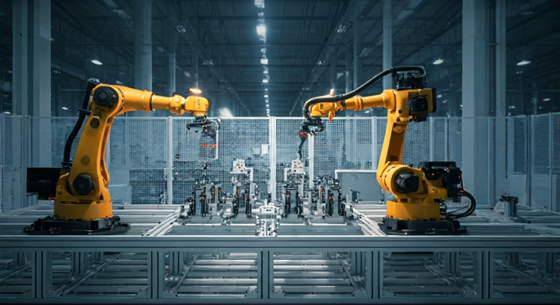
Automatic manufacturing is changing how production processes work. In the past, people depended mainly on manual labor at each step. With automated systems and automation technology, things are different now. The focus is more on precision, speed, and flexibility.
This change helps to lower human error. It also makes energy use better and keeps product quality steady. By using robotic systems, digital transformation, and new production equipment, human workers now have new roles. Most people now spend time watching over things and making key choices. Let's look into what automatic manufacturing is and see how it is not the same as the old ways of doing things.
What Is Automatic Manufacturing?
Automatic manufacturing is about using new automated systems and technology to make production processes better. It works by using things like programmable automation, sensors, and robotic arms. These tools take the place of workers for many jobs. This means the work gets done faster and with more accuracy. For example, before, people would work on assembly lines, but now, robotic systems and artificial intelligence do that work. Control systems help run these machines.
Automated systems such as CNC machines use real-time data from IoT sensors. This helps spot any problems or slow areas. Because of this, products can be made to the same standard each time. That helps keep product quality high and stops the machines from breaking down much.
The use of digital transformation is changing how factories work as well. Automation software can control many production processes, keep track of inventory, and help with scheduling. Factories today use different types of automation like hard automation and flexible systems to meet new needs. With these systems, businesses also spend less on labor costs. The push for smarter production lines fits the fast global market and what people now want. So, automated systems are making the way we work and build things better for everyone.
Key Differences Between Manual and Automatic Manufacturing
The change from manual labor to automation technology brings many good things to how we make products. Here’s an easy look at what this shift gives us:
- Consistency and Accuracy: With automated systems, there is less human error. Production lines get the same results every time at high production rates. Automated equipment is very good at keeping things the same.
- Energy Efficiency: Automation technology helps control how much energy is used through the production line. This cuts out waste so less is used and more is saved.
- Scale of Production: Manual labor can be slow because humans can get tired and make mistakes. Robotic systems do not need rest, so they work faster and help us reach high production rates.
- Safety Enhancements: Dangerous work is handled by automation instead of people. Human workers are less at risk, so this helps make the workplace safer.
-
All these changes show why industrial automation matters so much to manufacturers around the world who want to stay ahead. When we take a closer look, it helps to know where automation started to better see how much it has changed the way we work.
The Evolution of Manufacturing Automation
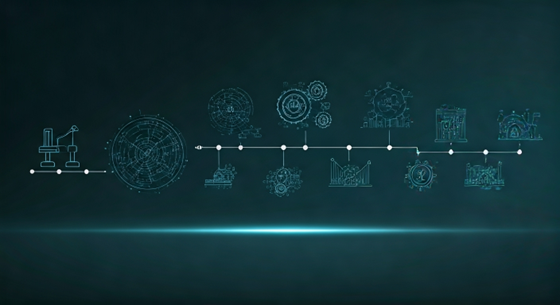
Manufacturing automation has grown a lot over time. It has gone through different stages in history. Each new stage has helped make work faster and changed the way people do things today. In the 18th century, factories started using steam-powered machines instead of manual labor. Now, we have digital factories that are all connected. This kind of industrial automation has helped bring about new ideas over and over again.
The journey of this change includes big events, like adding robots to production lines and starting to use technology that runs on AI. In the next part, we will look at these important events and see how each one has shaped the world of manufacturing.
Industrial Revolutions and Automation Milestones
Each industrial revolution has brought big changes in the way people automate work.
- First Revolution (1760-1840) saw steam power come in, taking over much of the manual labor that used to be done by hand. This helped people make more things faster in factories.
- Second Revolution: Henry Ford made assembly lines well-known, while the rise of electricity made it possible to do even more work at once for less money. This was a huge change for how people worked in factories.
- Third Revolution: In the late 1900s, there was a big jump in computer technology. The start of numerical control, or NC, meant people could use programmable automation in factories. General Motors became known as a leader during this time, showing everyone what could be done.
- Industry 4.0 (Today): The newest revolution is happening now with smart factories. Tools like IoT, digital twins, and machines powered by AI now help monitor and make work better using data analysis while the machines are running.
All these key moments show how much people now use automation technology in factories. Each new breakthrough keeps changing the way manufacturing is done.
Major Technological Breakthroughs Shaping the Industry
Emerging technologies are helping push industrial automation forward. First, artificial intelligence and machine learning use operational data to find patterns. This helps with predictive maintenance. It stops breakdowns before they happen.
The use of IoT sensors lets manufacturing plants share real-time data. This means the supply chain can be more accurate and easy to follow. New ideas like robotic systems and CNC machines can cut, drill, or put things together with great skill and almost no mistakes. This is changing the way various manufacturing processes work.
Digital twins let manufacturers copy their operations in a virtual space. This means they can test and improve production plans without slowing down real work. All these new ideas make today’s factories much more able to change, handle more work, and offer better quality. This helps companies do more at the same time and gives us better products.
Core Technologies Powering Automatic Manufacturing

Automation in manufacturing uses the latest technology to make work faster and more accurate. Key new tools in this field are robotic arms, IoT connections, and smart control systems. Today, many manufacturing facilities use programmable systems and software. These help run complex machine tools with ease, so everything works smoothly.
Each of these tools helps with different problems. Robotic arms make movements more precise. IoT gives real-time updates on the assembly line. Both of these work together in manufacturing facilities to bring big changes quickly. Below, we talk about two important things that are making manufacturing change faster.
Robotics and Industrial Robots
Industrial robots are now a must-have in many modern production areas. Robotic arms do jobs like welding, putting parts together, or moving items. They do all of this work with great speed and accuracy. This helps to increase production rates.
Collaborative robotic systems, which people also call cobots, work beside human workers. Cobots bring more safety and flexibility to smaller manufacturing plants. For example, they can do the same task over and over, while people do jobs that need more thinking.
When industrial robots are added to the factory floor, the space can handle many production styles. Robotic systems show what automation technology can do to boost productivity and lower work risks.
Sensors, Software, and IoT Integration
IoT integration is at the heart of new ways to automate work. It connects production equipment with sensors that collect data right away. This helps people use automation software for better planning and to spot any issues before they slow things down. Real-time numbers make it easier to take care of machines and keep things running smoothly for continuous improvement.
Also, IoT-powered systems help people see the whole supply chain, from start to finish. This makes inventory management better and lowers the time machines sit unused. Control systems help all the parts of manufacturing work together. This makes sure things run as they should, with less trouble.
When you link up machines with smart automation, you get the power of real-time tools. These tools are key for better and quicker work on the factory floor. IoT integration can help any business become more flexible and efficient by using a fully connected setup.
Where Is Automatic Manufacturing Used Today?
Automated manufacturing is used in many industries and for many different things. You can find it in automotive assembly lines that need to be very exact. It is also important in making medicines, where having the same product quality every time matters a lot. This makes automated manufacturing very useful in many ways.
These systems help a business or factory grow, in both production processes and supply chains. Let's look at two types that show how companies use automation in key production processes in their manufacturing facilities and assembly lines.
Automotive and Aerospace Sectors
In the automotive industry, automation technology is used a lot. Automated assembly lines handle key jobs like welding and painting. With these systems, the production rates are high, and there are not many mistakes. Robotic arms be the main tools used to make vehicles. These arms help to keep the output steady. Because of them, there are fewer human workers needed.
The same kind of change happens in the aerospace field. Here, automation helps make things more exact and safe. Robotic systems do inspections. They help to put together light materials and work on aircraft parts. This makes the aircraft more steady and safe.
Both the automotive industry and aerospace show how automation technology helps. It works to solve issues with labor costs. It also deals with the tricky job steps in these lines of work. Because of this, they keep up their good results all over the world.
Electronics, Pharmaceuticals, and Food Processing
Automated manufacturing plays a big role in the electronics industry. It helps companies make circuit boards that are better and much more detailed than what people can do using manual labor.
In the same way, the pharmaceutical field uses automation to follow regulations. Automation uses inspection systems to check product quality, so medicine companies can meet the rules. Big companies like Pfizer keep their products working well because they keep a close eye on each step in the process.
With food, there is automation using IoT to watch over packaging systems. This keeps food safe and fresh for longer, so customers feel good when they buy it. These three areas show how automation helps people get better and faster results and keeps customers happy. In the end, it is good for protecting a company’s name and customer satisfaction.
Advantages and Considerations for Beginners
Getting started with automatic manufacturing can be very helpful, especially if you are new. It can make the manufacturing process better by raising production rates. This is done by using assembly lines and robotic systems. These tools help cut down on human error, so things run smoother.
But there are some things to keep in mind. The first thing is the amount of money you may need for automation technology. It can cost a lot at the start. Good training programs for workers are also needed. You need these so people know how to use the new tools.
It is important to understand these things. They affect how well your operations work. They also help decide how well your business can do in the market.
Productivity, Cost Savings, and Safety Benefits
Automated systems are known for boosting productivity. They help you get higher production rates and better product quality. These systems cut down on human error and make operations smoother. This means companies save a lot of money on labor and running costs.
There are also many safety benefits. Automated systems lower the need for manual labor, especially in risky areas. By using robotic arms and good control systems, companies can build safer factory floors. This leads to fewer accidents and a healthier place to work. Because of all these, economic growth gets a strong boost.
Common Challenges and Limitations for New Adopters
A Beginner’s Guide to Getting Started with Automatic Manufacturing
Understanding the basics of automatic manufacturing is important for anyone new to this field. You will need to pick the right industrial robots and automation technology that fit your production needs. When you start, it is good to invest in automated systems and reliable control systems. These tools help you add new technology to your current work process.
Taking steps toward digital transformation will help your work become more efficient. You should also get to know how the internet of things and industrial internet of things work. Learning about data analytics is helpful too, as it makes your operations better.
It is important to have good training. This way, human workers can learn to work alongside robotic systems and programmable automation. Training helps everyone get used to the changes and makes work smoother for all.
Essential Equipment, Tools, and Resources Needed
To move into automatic manufacturing, you need to put money into important equipment. You need industrial robots for assembly lines and programmable automation to help run your different production processes. You also need good machine tools that can do very exact work. To help these machines run well, it is also important to use automation software. This can help make your work faster and easier.
Your staff should also take training programs. These should cover robotic systems and control systems. This will help them learn how to work with new machines and systems as your company changes.
Looking at what the industrial internet of things can do will give you better ways to watch your production processes and manage inventory. This way, you can know what is happening on the floor at all times and improve how you use your resources.
Skills and Training for Entry-Level Success
A good start in automation basics can help you do well in entry-level jobs. You need to know about robotic systems, programmable automation, and industrial robots. These skills help you work faster and better. It is also important to learn about automation software and control systems. With this know-how, you can fix problems on the factory floor as they happen.
It helps to focus on data analysis and keep looking for ways for continuous improvement. This gives new workers a better chance to adjust to the fast changes on the job. You should take part in hands-on workshops. Getting certificates in manufacturing helps you understand more. This can lead to a better work life and help you move up in your career.
Step-by-Step Process: How to Implement Automatic Manufacturing
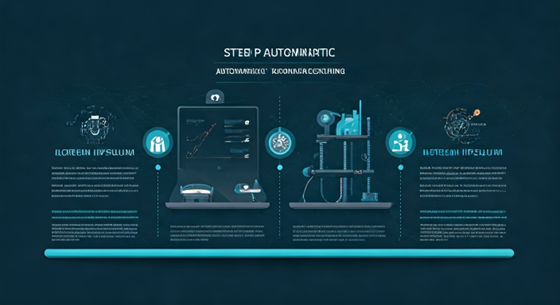
A clear plan for automatic manufacturing can help make work on the factory floor smoother and more effective. First, look at what your business needs and set clear goals. This is an important first step to make sure that the types of automation and automation technology you choose will fit what you want to get. After that, pick the right automation technology. There are many types of automation, so you have to think about which one will be a good fit. Check if it can grow as the business gets bigger and if it works well with your current systems. Next, plan everything carefully and spend time training your staff. This will help everyone use the new technology with less trouble. Keep checking how things are going so you can fix problems and keep getting better as you go.
Step 1: Assessing Business Needs and Setting Goals
Checking what your factory needs right now is very important before you bring in automation solutions. Start by looking at your current production rates, what types of products you make, and all your labor costs. This will help you see where things are not working well. Gather data about how your work happens every day. It also helps to talk with the human workers in the process to get their ideas about what could get better. When you know this, you can choose the right automation technology, such as CNC machines or programmable logic controllers, that will go with your business needs. If you clearly know your needs, you will get automation solutions that boost productivity, make your product quality better, and improve customer satisfaction.
Step 2: Choosing the Right Automation Technology
To pick the best automation technology, you need to know about the different types of automation that are in the market. Think about your production processes, how your equipment works with new systems, and what your manufacturing facility needs. For example, programmable automation is a good choice if you often make changes to your designs. Hard automation works well for people who make many of the same products in big numbers. It is also important to make sure your new system can work with what you already have—like your control systems or enterprise resource planning tools. Doing this can help boost how much work gets done on the factory floor. Picking the best technology for your site will help your company get more out of its digital transformation and work better every day.
Step 3: Planning, Integration, and Staff Training
Good planning is key when you want to move to automatic manufacturing. Start with mapping your current production processes. Find the parts that can work with automation. Use tools like enterprise resource planning and data analysis. These help you make things more efficient.
At the same time, train human workers well. Focus on both technical skills and helping them get used to changes. Make sure staff learn to use new robotic systems and automated tools. Doing both steps together helps you combine everything on the factory floor more smoothly. This can cut down human error. It also helps boost product quality and the speed of your work on the floor.
Step 4: Monitoring Performance and Continuous Improvement
Monitoring performance in automatic manufacturing means using both advanced data tools and real-time feedback. Businesses use control systems and automation software to check on production rates, product quality, and labor costs. It is important to focus on continuous improvement by spotting problems early. This lets you use the right solutions for these problems. Regular reviews of performance make it easier to see where things can get better, so the manufacturing process can change fast when needed. By following these steps, businesses can help economic growth and boost customer satisfaction as the industry changes over time.
Conclusion
Talking about the big change automatic manufacturing brings shows how it can boost both how much gets done and how good things are made, while helping to lower labor costs. When businesses start using this kind of technology, they set themselves up for continuous improvement. They can also adjust faster to what the market wants.
There are some problems, like joining new tools with old machines and finding people with the right skills. However, the good points usually are bigger than these issues. When companies use automation solutions along with smart, strategic planning, they can find new opportunities to grow and make customers happier. This move is a strong step toward better ways of working in factories.
Frequently Asked Questions
Is automatic manufacturing affordable for small businesses?
Automatic manufacturing can be good for small businesses now. This is because new technology makes the starting costs and running costs lower. But, it is important to think about the company’s needs, ways to make money back, and what payment choices are out there. Doing this helps you keep the business strong and make a profit as time goes on.
Will automation lead to job losses in manufacturing?
While automation can make work easier and take away some jobs, it can also bring in new types of jobs that need other skills. The main work moves from doing things by hand to taking care of technology. This lets workers do jobs that are more interesting and use new ideas in the manufacturing sector.
How long does it take to implement an automated system?
The time to set up an automated system changes based on how big and complex the system is. The kind of technology you use also matters. For most projects, it can take a few weeks or a few months. It depends on things like how much planning you do, how everything fits together, and how long it takes to train people on the new system so they can use it well.
What are the most common mistakes beginners should avoid?
People who are new to automatic manufacturing often skip doing enough research. They also might not give the right training to their team. There is a chance they think things will fit in faster than they do. On top of that, if you do not set clear goals that you can measure, it can slow down your progress. It is important to spot these problems early and fix them. This will help things go smoother and give a better chance for success.

